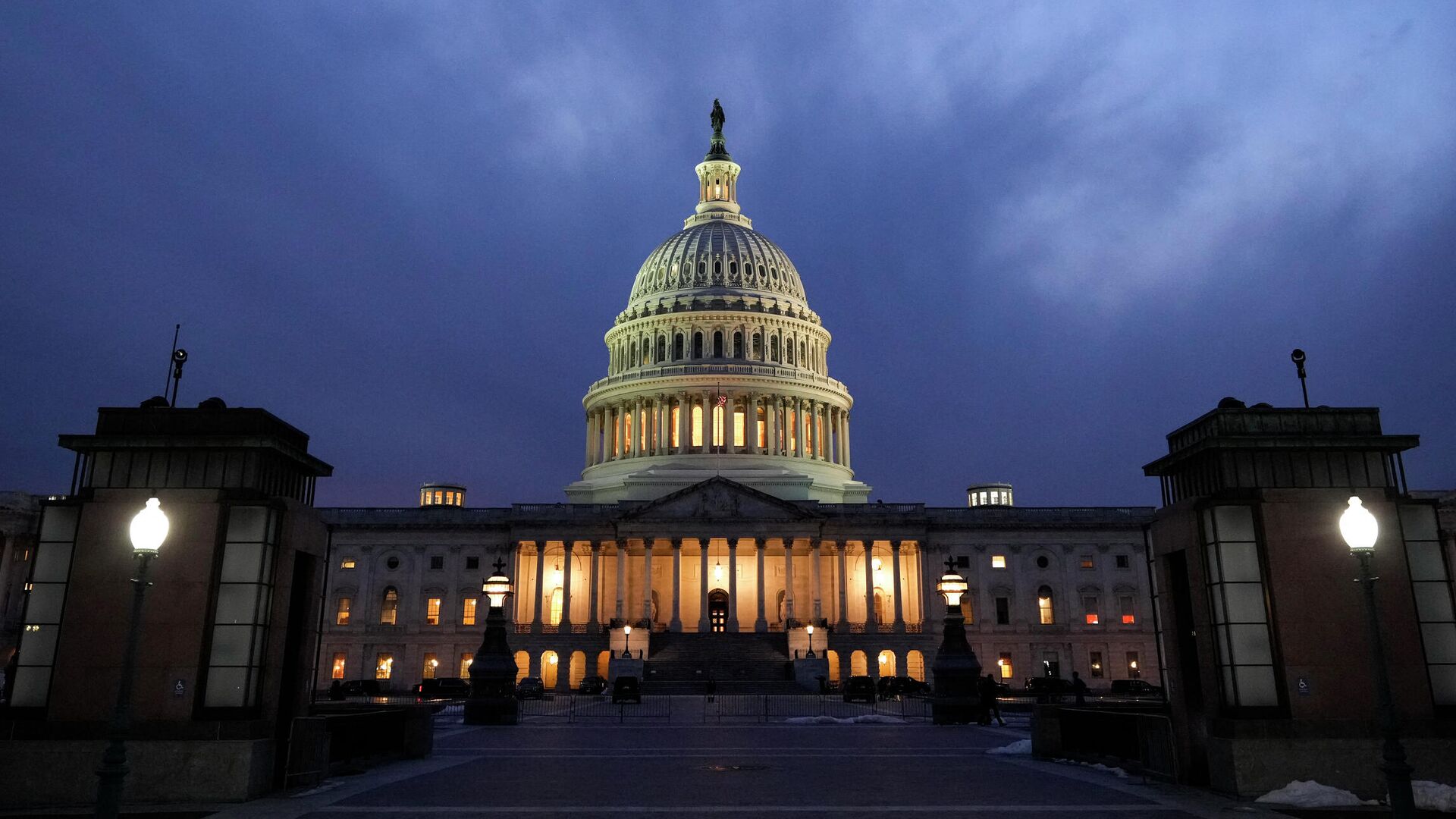https://sputnikglobe.com/20220415/confirmed-covid-19-cases-spiking-in-washington-dc-despite-lack-of-tracking-1094799853.html
Confirmed COVID-19 Cases Spiking in Washington, DC, Despite Lack of Tracking
Confirmed COVID-19 Cases Spiking in Washington, DC, Despite Lack of Tracking
Sputnik International
Fewer jurisdictions are reporting daily COVID-19 cases, making it more difficult for individuals to judge the risk of infection. The metrics that do exist... 15.04.2022, Sputnik International
2022-04-15T19:55+0000
2022-04-15T19:55+0000
2022-04-15T21:42+0000
covid-19
washington dc
virginia
maryland
wastewater
https://cdn1.img.sputnikglobe.com/img/07e6/01/14/1092401923_393:762:2679:2048_1920x0_80_0_0_e218be1b4e84386d7b72cf3c3204e568.jpg
The nation’s capital is experiencing another wave of COVID-19 infections just months after the city dropped vaccine mandates for restaurants and indoor mask mandates city wide.According to the latest available data, Washington, DC, has seen a seven day average increase of 54%. Maryland is experiencing a 43% increase, while Virginia is up 27%. Nationwide COVID-19 cases are up 27%.The number of cases are likely underreported. Health departments are providing less publicly available data and what data is coming out is weeks old. Washington, like many places around the country, is no longer providing daily numbers. Instead, it only provides a weekly case rate per 100,000 residents and that was last reported on April 3, nearly two weeks ago.That statistic still paints a bleak picture, however. 51 cases per 100,000 residents were reported for the week of March 6; it was 204 on April 3.Even if health departments wanted to provide more accurate data, doing so would be difficult. The popularity of at-home testing means that even confirmed cases are underreported.The number of confirmed cases is still far below what the area experienced in December and January when the first omicron variant swept through the city, but the rapid rise does have some officials concerned.American and George Washington universities have reinstituted mask mandates and 140 miles up I-95, indoor mask mandates have been reinstituted in Philadelphia.There is another data point that the CDC is still reporting that can be used to provide a gauge of COVID-19 infection rates, though it is extremely broad: wastewater.COVID-19 is excreted in the waste of both symptomatic and asymptomatic infected individuals, so officials can track the concentration of the genetic materials in untreated sewage water to get an idea of how the virus is spreading through a population. The concentration can be affected by rain and other environmental factors but it is still a decent gauge when other data points are lacking.The treatment plant in Washington, DC, which includes wastewater from Prince Georges County, Montgomery County, Loudon County as well as the capital, has seen COVID-19 material increase by 827% over the last 15 days.Officials do have hope that this wave will not be as bad as previous spikes. Higher vaccination rates and natural immunity being built up thanks to the last omicron outbreak mean that the hospitalization and death rates may not skyrocket as they did earlier this year. So far, that has proven true, hospitals are not currently experiencing a huge surge in cases. However, as more people become infected, that may change.The last wave was blunted with mask and vaccine mandates but it is unlikely that the public will support a return to lockdowns and mandates. According to an Ipsos poll released on Tuesday, only 9% of Americans currently see the pandemic as a serious crisis.
https://sputnikglobe.com/20220404/us-senators-reach-deal-on-10-billion-in-covid-19-funding-with-no-global-aid-1094483929.html
washington dc
virginia
maryland
Sputnik International
feedback@sputniknews.com
+74956456601
MIA „Rossiya Segodnya“
2022
News
en_EN
Sputnik International
feedback@sputniknews.com
+74956456601
MIA „Rossiya Segodnya“
Sputnik International
feedback@sputniknews.com
+74956456601
MIA „Rossiya Segodnya“
covid-19, washington dc, virginia, maryland, wastewater
covid-19, washington dc, virginia, maryland, wastewater
Confirmed COVID-19 Cases Spiking in Washington, DC, Despite Lack of Tracking
19:55 GMT 15.04.2022 (Updated: 21:42 GMT 15.04.2022) Fewer jurisdictions are reporting daily COVID-19 cases, making it more difficult for individuals to judge the risk of infection. The metrics that do exist paint a mostly grim picture.
The nation’s capital is experiencing another wave of COVID-19 infections just months after the city dropped vaccine mandates for restaurants and indoor mask mandates city wide.
According to the latest available data, Washington, DC, has seen a seven day average increase of 54%. Maryland is experiencing a 43% increase, while Virginia is up 27%. Nationwide COVID-19 cases are up 27%.
The number of cases are likely underreported. Health departments are providing less publicly available data and what data is coming out is weeks old. Washington, like many places around the country, is no longer providing daily numbers. Instead, it only provides a weekly case rate per 100,000 residents and that was last reported on April 3, nearly two weeks ago.
That statistic still paints a bleak picture, however. 51 cases per 100,000 residents were reported for the week of March 6; it was 204 on April 3.
Even if health departments wanted to provide more accurate data, doing so would be difficult. The popularity of at-home testing means that even confirmed cases are underreported.
The number of confirmed cases is still far below what the area experienced in December and January when the first omicron variant swept through the city, but the rapid rise does have some officials concerned.
American and George Washington universities have reinstituted mask mandates and 140 miles up I-95, indoor mask mandates have been reinstituted in Philadelphia.
“The sad reality is there’s no longer a good set of metrics that you can look at to gauge your risk today as opposed to last week or two weeks ago,” Neil J. Sehgal, an assistant professor of health policy at the University of Maryland told the Washington Post. “What we’ve done is we force people to rely on their intuition.”
There is another data point that the CDC is still reporting that can be used to provide a gauge of COVID-19 infection rates, though it is extremely broad: wastewater.
COVID-19 is excreted in the waste of both symptomatic and asymptomatic infected individuals, so officials can track the concentration of the genetic materials in untreated sewage water to get an idea of how the virus is spreading through a population. The concentration can be affected by rain and other environmental factors but it is still a decent gauge when other data points are lacking.
The treatment plant in Washington, DC, which includes wastewater from Prince Georges County, Montgomery County, Loudon County as well as the capital, has seen COVID-19 material
increase by 827% over the last 15 days.
Officials do have hope that this wave will not be as bad as previous spikes. Higher vaccination rates and natural immunity being built up thanks to the last omicron outbreak mean that the hospitalization and death rates may not skyrocket as they did earlier this year. So far, that has proven true, hospitals are not currently experiencing a huge surge in cases. However, as more people become infected, that may change.
The last wave was blunted with mask and vaccine mandates but it is unlikely that the public will support a return to lockdowns and mandates. According to an Ipsos poll released on Tuesday, only 9% of Americans currently see the pandemic as a serious crisis. 

